Originally published at: https://www.pakwheels.com/blog/choosing-right-spark-plugs/
For a petrol powered vehicles, your spark plugs are as important as the fuel itself. You get the mixture of petrol and air in the cylinder to power the vehicle, but it is the spark plug that ignites that mixture to create energy for the engine to start working. When the piston sucks the air and fuel mixture, it compresses that mixture and then sparks plugs are timed to fire at the optimal moment to create as much of a bang as possible. The spark plugs are responsible for the detonation that actually cause the vehicle to move.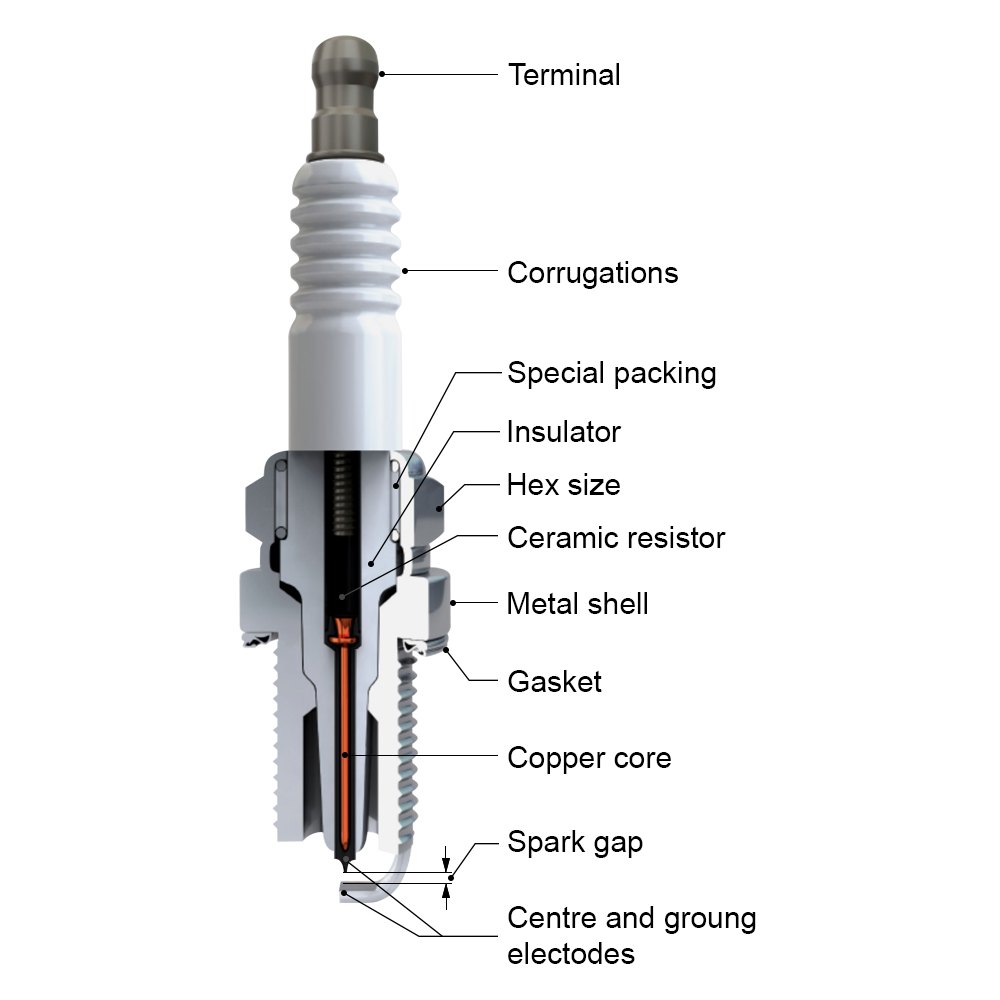 Since spark plugs have such integral role in the operation of an engine, it is important to pay attention to what kind of plugs are best suited for your vehicle.
Since spark plugs have such integral role in the operation of an engine, it is important to pay attention to what kind of plugs are best suited for your vehicle.
-
Different shapes and sizes
First of all, chose the plugs that fit in your car on OEM specs. Spark plugs are available in various tread patterns, hex sizes as well as physical sizes. The spark plugs used in the R18 engine of 8
th generation
Honda Civic are different than the plugs of
9th generation Civic. And since there is an influx of all sorts of Japanese imported vehicles, you will be amazed to see all the various spark plugs present in these vehicles. Same is the case in motorcycles. Shapes and sizes differ engine to engine (type and displacement).
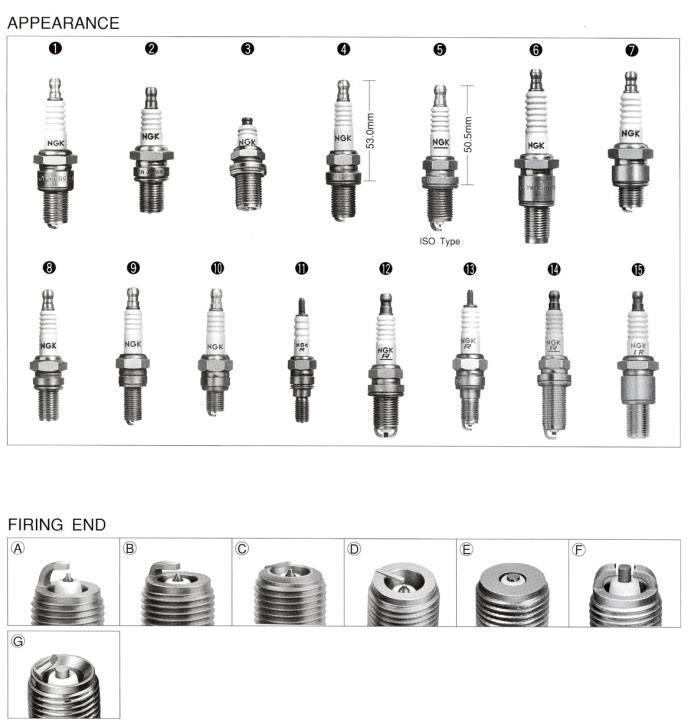
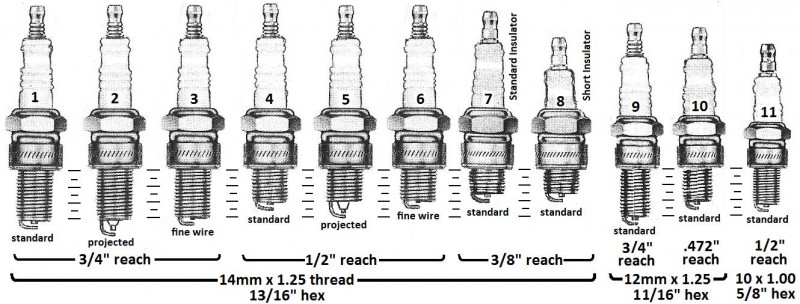
-
Different types of electrodes
Now plugs are available in different materials as well. Although the copper tip plugs are still the most commonly used spark plugs, you can now buy Iridium and platinum spark plugs as well. Both copper and other plugs have their pros and cons, but one should only use plugs that are recommended by the automaker.
And lastly, there is what is known as the operating ranging of the spark plug. It is also known as the heat range of the spark plugs.
[caption id="attachment_73833" align="aligncenter" width="802"]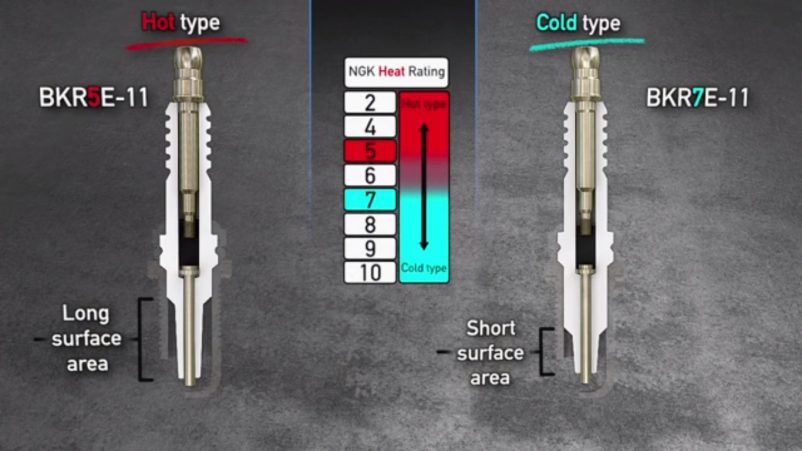 Difference between the insulator mass between the cold and hot spark plug[/caption]
Difference between the insulator mass between the cold and hot spark plug[/caption]
The tip of the spark plugs needs to be in a certain temperature range to perform at its best. If the tip is overheating (above 800-850 Celsius), it can lead to premature ignition (aka pre-ignition). It means the air fuel mixture can ignite prematurely due to the retained heat of the spark plug, and not the spark. If the temperature is lower than 400-450 degrees Celsius, carbon will start to deposit on the plug’s tip and a time will come that the plug will start to pass an electric current through the carbon into the body of the spark plug (thread shell) instead of the electrodes.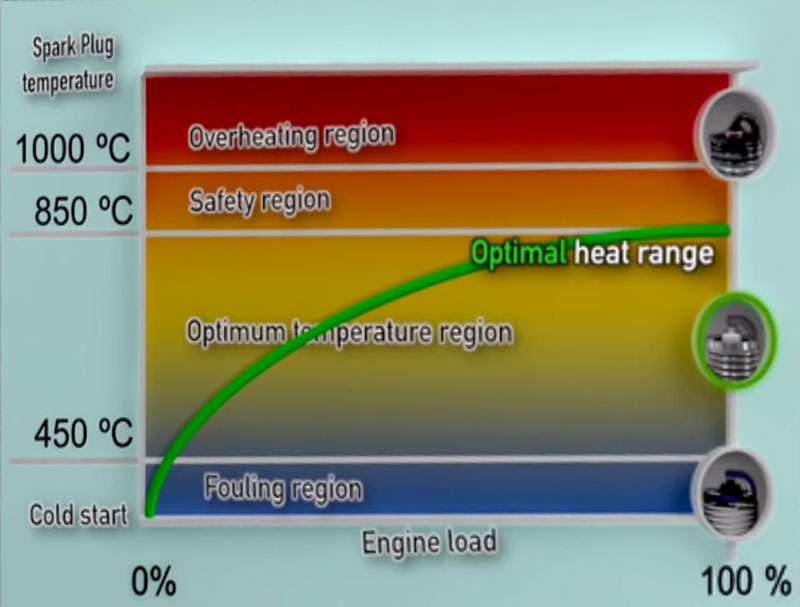
Spark plugs control the heat dissipation with the surface area of the insulator in correlation with the thread shell. The hot spark plug has less insulator area/mass whereas the cold plugs have larger insulator mass. The hot spark plug has a slower transfer of heat away from the tip of the plug whereas the cold range spark plug will transfer the heat more rapidly. The heat is transferred from the insulator surface to thread shell, and from thread shell to the cylinder head. Larger the insulator mass means the heat will keep on transferring farther hence making the spark plug colder.
[caption id="attachment_73837" align="aligncenter" width="802"]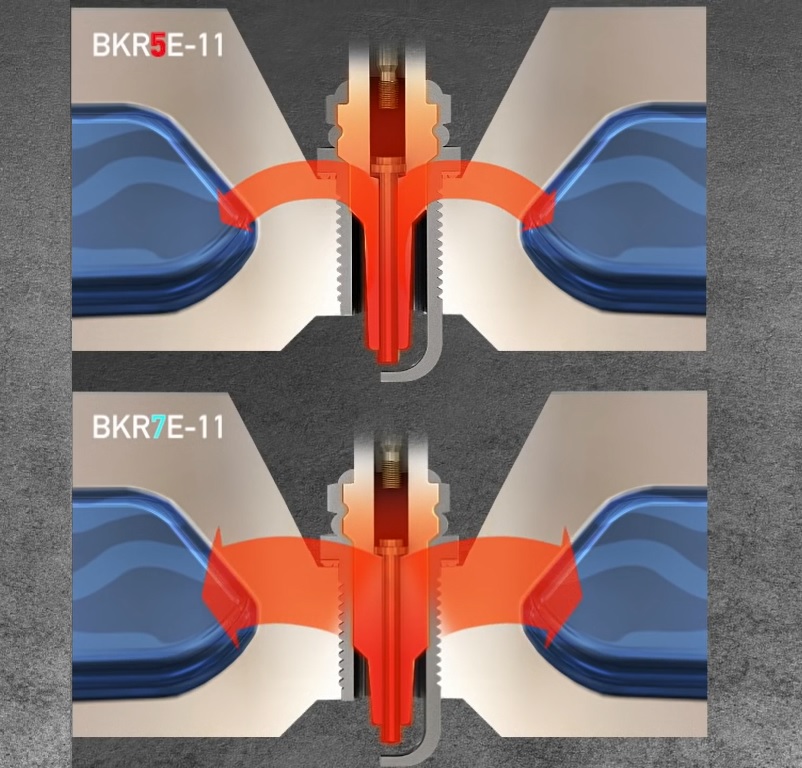 Larger the insulator (colder spark plugs), quicker the heat transfer and vice versa.[/caption]
Larger the insulator (colder spark plugs), quicker the heat transfer and vice versa.[/caption]
Keep in mind the heat range of the plug has nothing to do with how hot the plug can fire a spark. It is about how much heat would the plug retain during the operating cycle in its tip. Spark plugs need that heat to burn off any deposits on its tip for clean burning. A foul spark plug is of no use and will only hurt your fuel economy. On the other hand, pre-ignition is detrimental to the health of your engine and can cause some serious engine damage. The spark has to be perfectly timed and the combustion has to take place at a precise moment.
Final words
It is highly advised to not play with the spark plug heat range. Companies do a massive amount of research before deciding on the type of the spark plugs as well as the heat range. Heat range not only depends on the region/market where the vehicle is launched but also the type of the engine and application. If you have a stock car, it is best to keep the recommended spark plug type for the optimum performance.